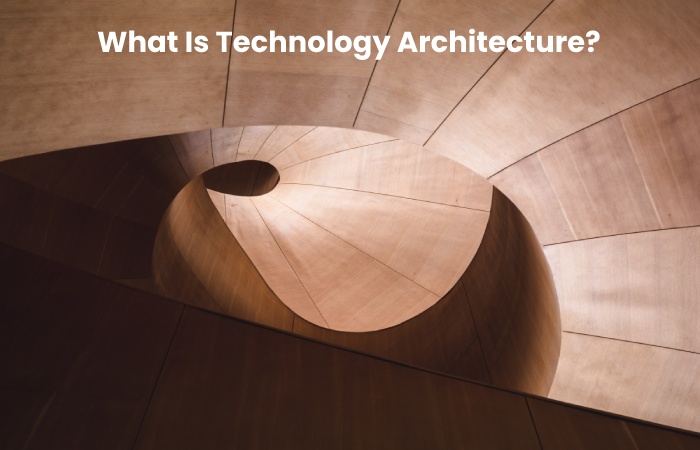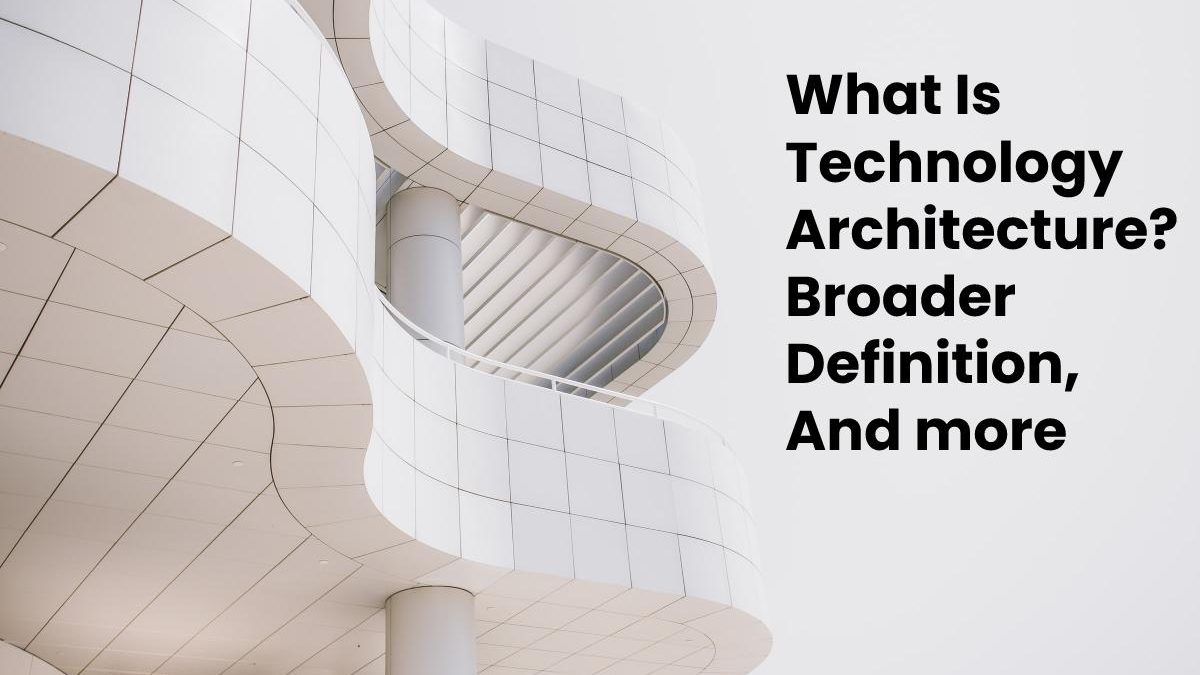Technology architecture is – and should be – we must first define the concept of “technology”. Therefore, I would like here not to limit myself to information technology (IT) but to take the idea of technology a little broader:
Technologies are aids created by human beings to help them achieve their goals more efficiently in their environment.
 , Two Main Categories Of Technologies Can Be Distinguished:
, Two Main Categories Of Technologies Can Be Distinguished:
- Technologies that work and transform materials
- For example, means of transport, installations, machines, and devices are used to produce goods or provide services.
- Technologies that work and transform information
For example, computers, communication and network hardware and software technologies deliver cognitive performance.
Interestingly, today most expressions of these two categories of technology include both hardware and software:
- Material processing technologies use information when automating many features (machine control).
- Information processing technologies require physical devices to achieve their purposes (execution platforms).
In The Field Of The Processing Business, The Distinction Can Be Taken Even Further:
- Information technology (IT) is defined as virtual technologies that support office and management tasks within a company.
- Operational technologies (OT) are the hardware technologies that support a company’s manufacturing and production tasks.
The following chart illustrates the separation between IT and OT within manufacturing companies. These two technologies together are referred to as cyber-physical systems (CPS). A holistic approach to technologies is essential today, especially when ensuring cybersecurity.
The Advantages Of A Technological Architecture
Technological architecture describes the technical means, such as machines and computer systems. And the data that a company uses to carry out its operations. Based on the differentiation between descriptive and prescriptive models. Technology architecture models can be use. For example, for the following considerations.
A Metamodel For The Relationships Between Technologies
What are the relationships that an enterprise architect should consider to be able to answer the questions posed above? In a previous article on the benefits of a functional architecture(currently only available in German), I introduced things like abilities and resources. A resource is generally understand to mean all the necessary tools to generate the desire capability.
Concerning technological architecture, it is first and foremost about the resources of technologies. These are material resources such as devices, machines, or entire installations in many cases. Human resources and consumable resources, such as materials or energy, Not consider here because they are essentially the subject of operational activities.
However, to achieve the necessary capacities, these physical resources very often require know-how so that their use is profitable. The specialize personnel of a company can provide this know-how. Thanks to software applications. This know-how is naturally increasingly automatic in times of digitization. However, for software to unleash its full capabilities. It must run on a computer a physical resource.
A company’s computers are located on a specific site and are connect by one or more networks (cloud included). Software components based on different computers can exchange information via interfaces (APIs). Finally. Some of these computers house databases in which crucial corporate data is store and made available to other computers via the networks.
From an economic point of view. Attention should be pay to a company’s available resources when estimating influencing factors and developing strategies and tactics based on these estimates. This last point is illustrate in the Business Motivation Model (BMM)by the concept of “Resource” (a consumable resource) and by the idea of “Fixed Assets” (equipment) of a company.
Types And Instances
In any case, concerning the resources. The metamodel must be even more detailed. A computer can exploit several software components, and, conversely. A software component can be control on several computers.
Here the question arises as to what we mean by “computer”: is it a type of computer (e.g. an HP EliteBook 850) or a specific instance (e.g. my HP EliteBook 850 )? The same question arises for software: does “SAP” mean the type of SAP software in general or the SAP installation in our company which is p. ex—install in a test environment. So a specifically configure instance?
If not only the resource types of management enterprise-wide, but also the specific instances of the types. One falls into the domain of a Configuration Management Database (CMDB) according to ITIL. We are thus at the limit of enterprise architecture. Three scenarios are, in principle, possible:
- Only resource types of manage in the enterprise architecture, i.e. instance inventory is delegate to a CMDB (and probably other people).
- Resource types and instances of management in the Enterprise Architecture, i.e. the Enterprise Architecture Directory also take over the function of CMDB.
- A distinction is between hardware and software at the level of the “big” company (Cluster, Server, Enterprise-Software) and hardware and software the level of small customers (PC, Notebook, Mobiles, locally install software): At the enterprise level, hardware and software manage by type and instance, while for custom hardware and software, only types of manage (and examples if necessary in a CMDB).
Unlike ITIL, TOGAF does not differentiate between types and instances of resources. Therefore, it is impossible to generalize and determine which of these variants is the right one for a company – it depends on each situation, the history of the company and often political realities.
The Elements Of The Technological Architecture
I use the concept of technology architecture a little differently than TOGAF. TOGAF classifies as technology architecture only the hardware and software infrastructure necessary to operate a company’s business computing. This is a definition, from my point of view, a little limited: indeed, the applications, the databases and the necessary machines are, in my opinion, also to be counter as technologies. Therefore, I consider the following specific architecture elements to be an integral part of the technology architecture:

